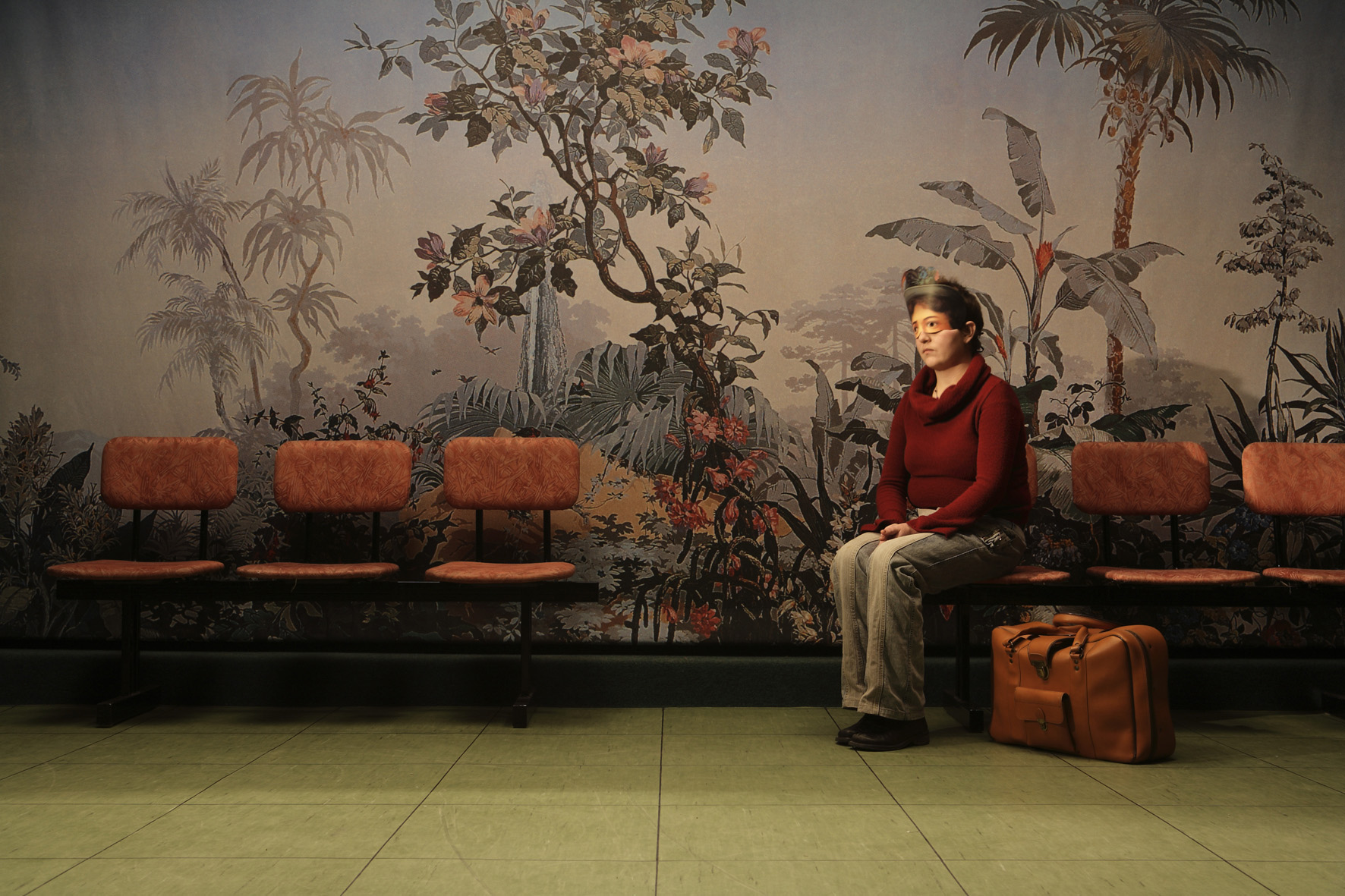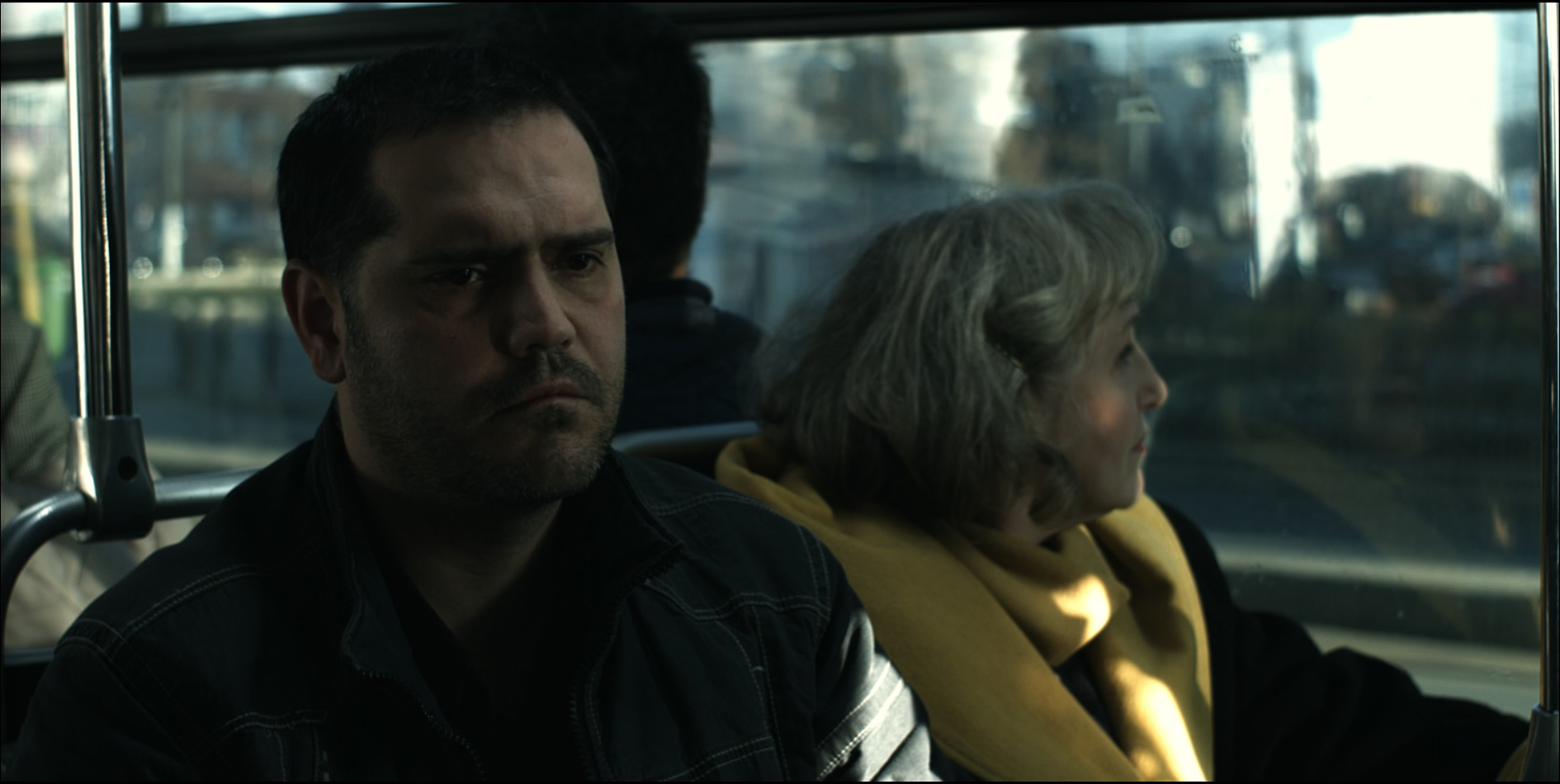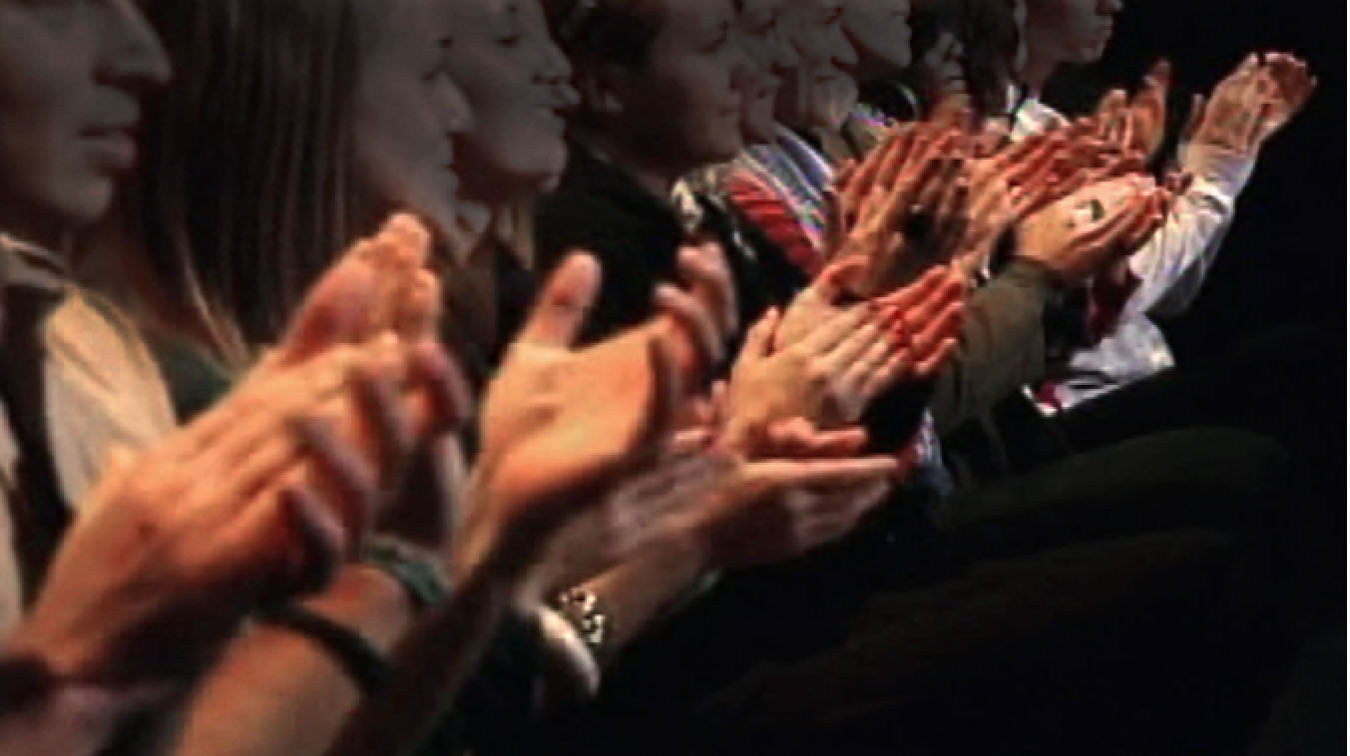
I can't help my skepticism for art exhibitions about the viewer. In so many cases, exhibitions with curatorial structures such as this often leave the viewer in an uncomfortable place, and I don't mean that in a good way. So, when I went to see the exhibition at Yerba Buena Center for the Arts with a title as grand as Audience as Subject, needless to say, I was suspicious.

Isola Bella -- credit: Danica Dakic 2007-2008
Touring the YBCA's galleries, each room contained another access point for the audience to be aware of themselves, as they relate to the image on the walls. Despite the direct conceptual framework, Audience as Subject delves into the subject of viewing and being viewed with great skill, leaving room for exploration into the relationship between performer, theater, cinema, and audience with confidence and nuance.
Danica Dakić's Isola Bella delicately addresses the theater as a medium, allowing the subjects of the video to perform onstage behind beautiful masks that partially conceal their face. Each performer, all residents of the Home for the Protection of Children and Youth near Sarajevo, acts out events from their own lives. The surreal drama is reminiscent of a David Lynch film as the performer, hidden behind the character picture in the mask, retells often tragic and horrific events.
The video swaps back and forth between actor and audience - an audience full of actors still in mask. As the view turns, the crowd reacts with stiff applause or utter silence. Here, the audience is doubled, represented in the work and through the audience member viewing the video in theater seating replicating the audience seating onscreen. The viewer instantly places herself in the group of onlookers dressed in masks, folding together all of the levels of separation provided by the theater's fourth wall and the cinema's screen.

Troleibuzul 92 -- film -- credit: Stefan Constantinescu-2009
Similarly, Stefan Constantinescu's Troleibuzul 92 dispels reality from documentation, imbuing a social experiment with increased theatricality. In this film, Constantinescu sets a stage to document bystanders as a man on a bus has an aggressive conversation with his partner over the phone. As the conversation builds, nearby witnesses begin to look away, and nervously separate themselves from the protagonist. Each observer cannot avoid her relationship to the main character. The unfolding events bring the unwilling bystander to a place of uncomfortable proximity, yet because the beautifully choreographed video keeps its roots in the language of film, the YBCA viewer still remains safe, at a cinematic distance.

Venerations (Applause 3) -- film -- credit: Carballao-Farman 2009-2010
Throughout the exhibition, Audience as Subject asks its viewers to experience the position of spectator directly through the image of the audience, as evident in Caraballo-Farman's Venerations (Applause 3) and Ulla Von Brandenberg's Publikum. Venerations (Applause 3) shows a circle of video screens turned towards each other, in a constant demonstration of internal appreciation, the screens obsessively applaud one another without an end and without a subject. Ulla Von Brandenberg's mural, Publikum, a large abstracted image of a theater audience looking onto the stage, beautifully frames the opening of the exhibition. While presenting the audience as a subject, each of these works move the focus from performer to audience member, yet fail to allow the YBCA viewer to realize their position as spectator.
Overall, Audience as Subject provides a surprisingly delicate framework to works that explore performativity, social constructions, and cinema as a medium. Although the onlooker is staged as the subject of the projects on view, each work devised a new way to observe and to be observed.